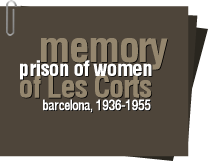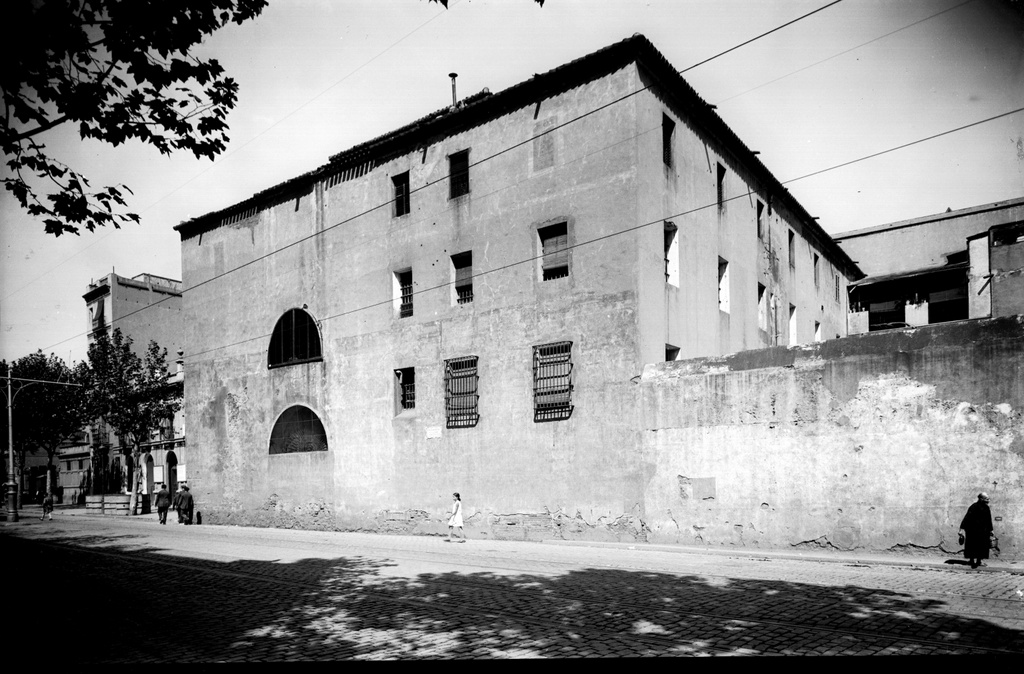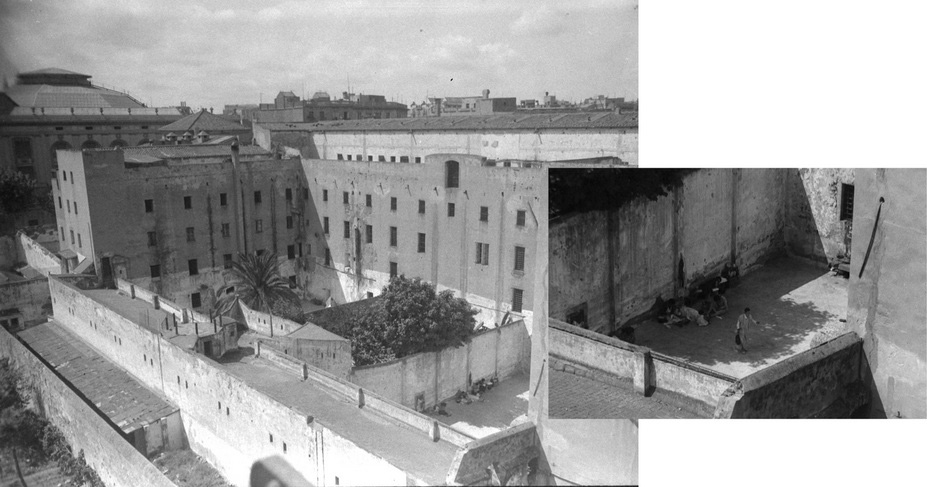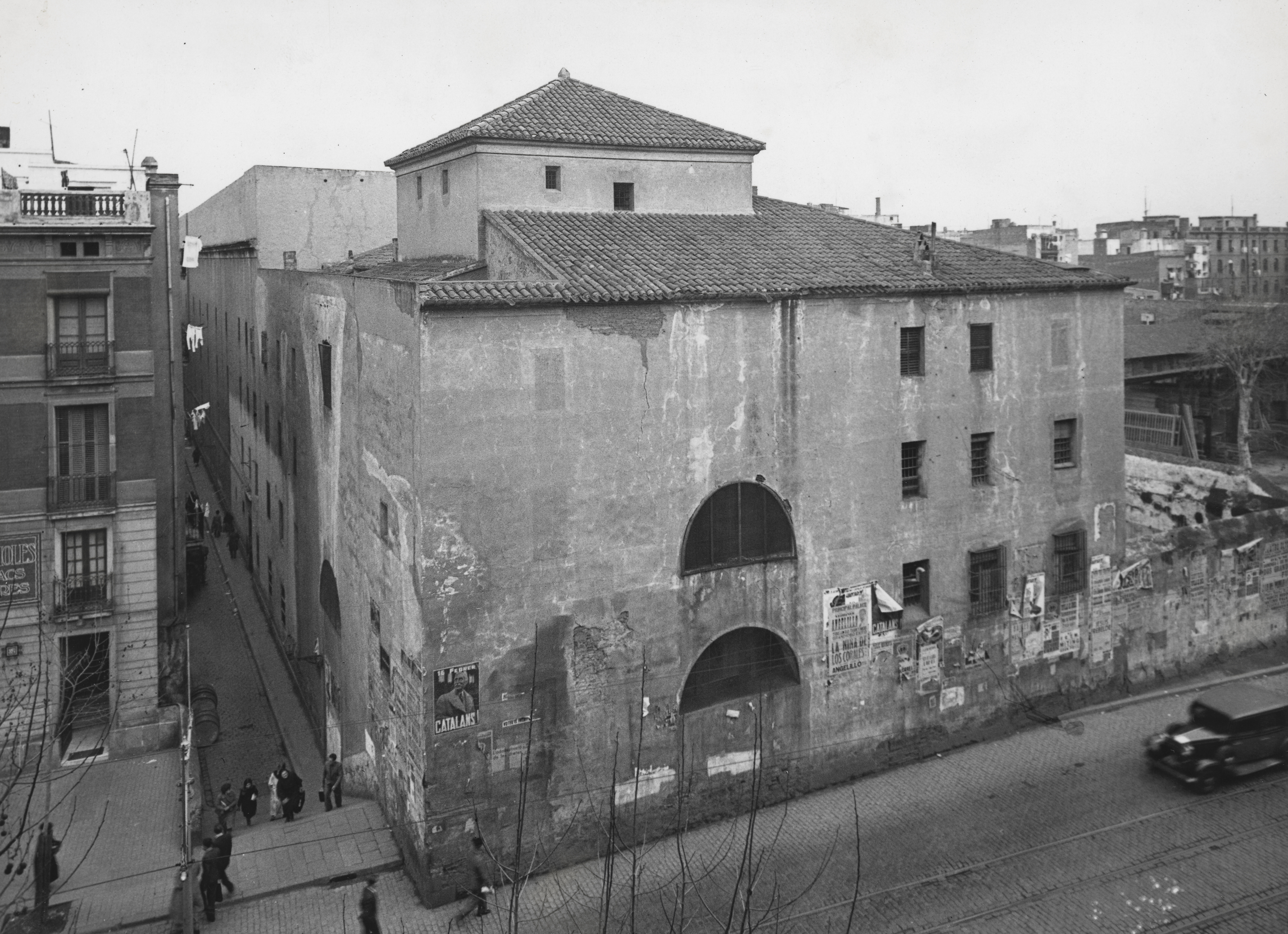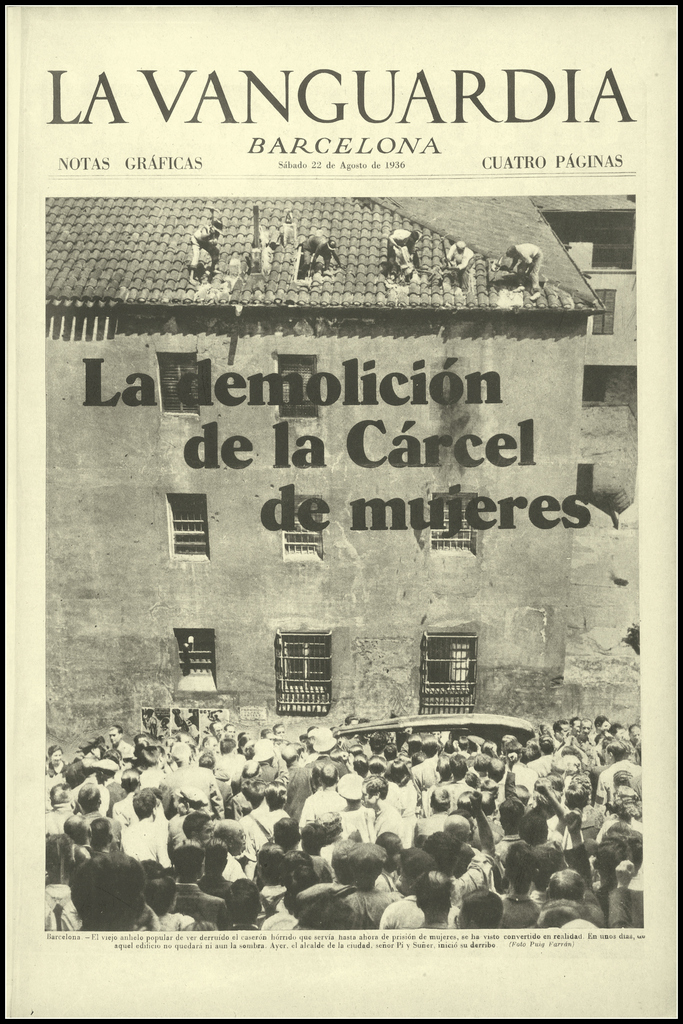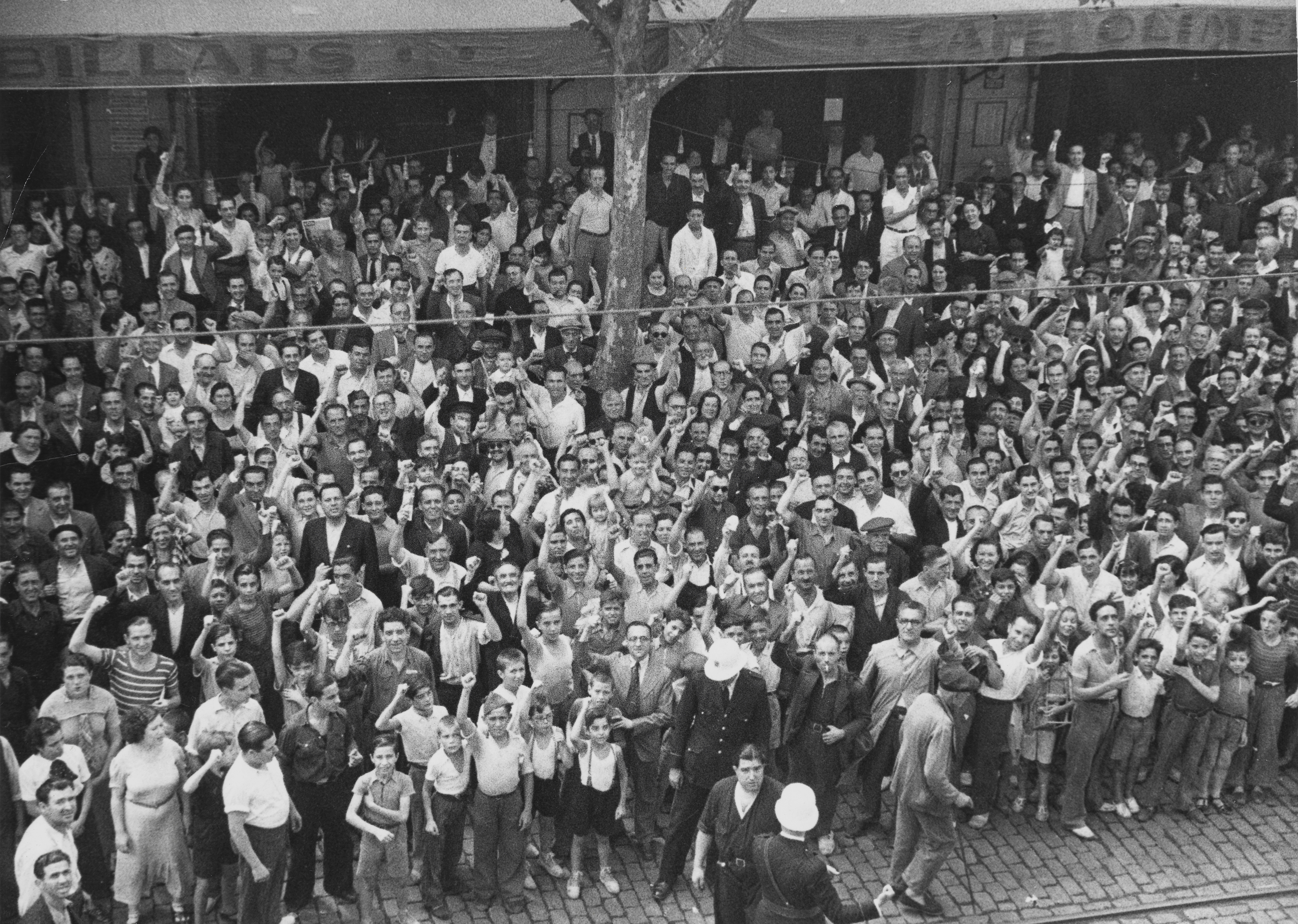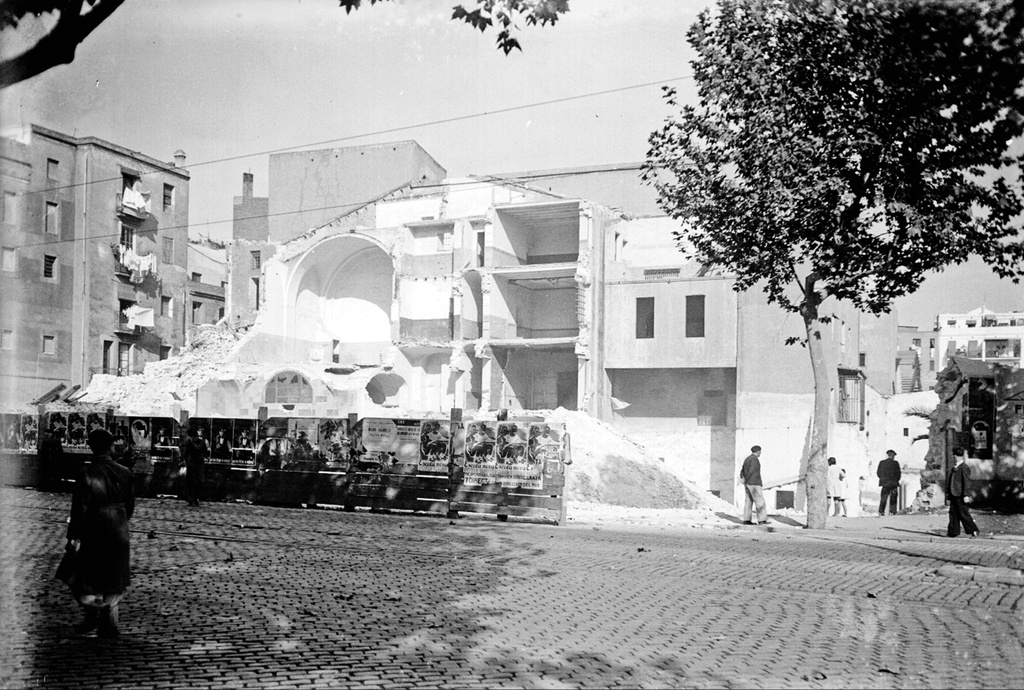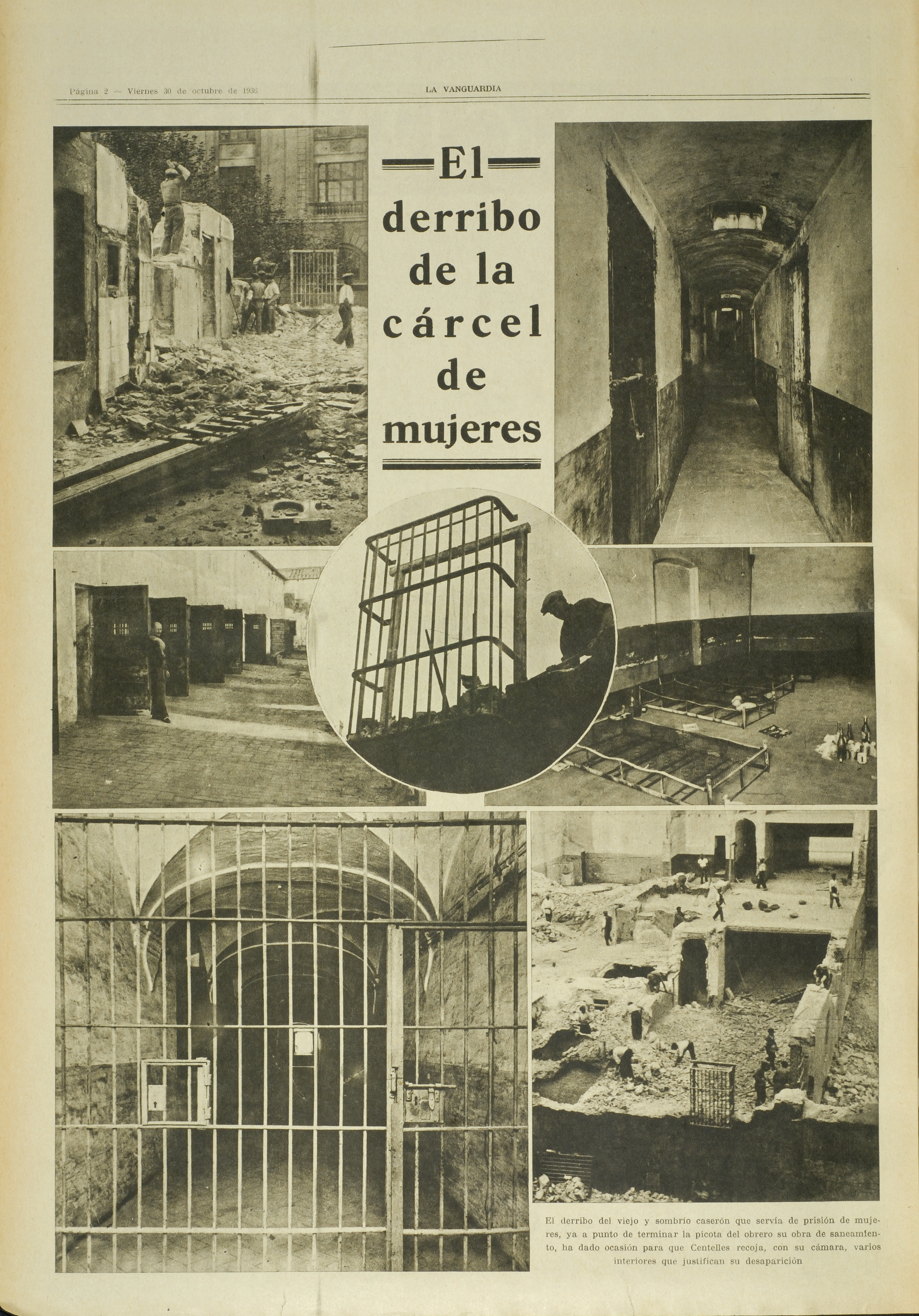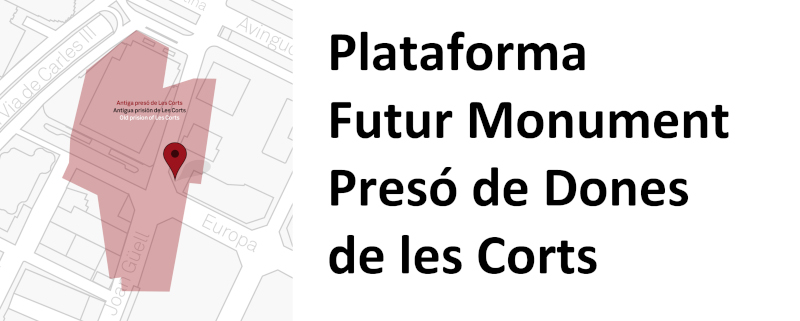The Presó Vella came to embody, in the collective mind, during the first third of the 20th Century, the concept of the ‘galera’, or prison for disreputable women, characterised for having the most appalling sanitary conditions which had been publicly exposed over the years. The building, an old convent, was located between the Ronda de Sant Pau, and Reina Amàlia and Lleialtat streets.
The site is at present located at Folch i Torres square, in the Raval neighbourhood. Born in 1838 as a mixed sex prison, the Presó Vella was turned into a prison for women and small children in 1904 with the construction of the Presó Model for men.
Enclosed within the city centre following the great development of the Ensanche (the areas of the new urban expansion), the public outrage concerning the appalling state of the building increased over the years, and this was palpable on the street as well as in Parliament. A collection of photographs taken by the journalist Gabriel Casas show this atmosphere of outrage.
In 1929 the journalist Domènec de Bellmunt wrote a piece that included photographs by Brangulí criticising the unhealthy conditions of the place. In December 1930, thirty six inmates were living there, most of them between the ages of 20 and 30, watched over by eight ‘paúlas’ (members of the Sisters of Charity of Saint Vincent de Paul).
Since 1880, the paúlas were responsible for running the affairs of the correctional facilities for women in Spain.
The day the Second Republic was proclaimed, the storming of the Presó Vella involved, as a revolutionary ritual, the release of the inmates and the burning of the archive including the anthropometric profiles. It was a clear sign of disapproval, particularly high among the inhabitants of the city centre (such as the Fifth District or Barrio Chino (the red-light district) where the prison was located) and those who lived in the new suburbs resulting by mass immigration.
Many of the young women in those working-class areas had turned to prostitution to make a living and ended up in prison, locked away every now and again for short spells (‘quincenas’, Spanish for a fortnight), hence the jail jargon sobriquet of ‘quincenarias’. They were released upon the payment of a fine.
The Presó Vella was pretty much overlooked by the republican government prison reforms. Everything there remained the same, except for the Paúlas sisters, who were replaced by officers of the new female corps created by Victoria Kent in 1931-1932.
The increase in the number of those political and ‘social’ prisoners (arrested following strikes and labour conflicts) in a context of mounting industrial clashes, and the conditions of the building plagued by the scarcity and awful working conditions of the new prison staff, turned the Presó Vella into the worst possible posting for the new civil servants.
It was not until the attempted coup and the revolution outbreak of 19 July 1936 that the Presó Vella was again seized by the crowds and the prisoners permanently released. ‘This house of torture was closed down by the people in 1936’, read a placard next to a black and red banner hanging from one of the windows of the ruined building, according to reports by the journalist and writer Langdon-Davies.
About a month later, on the morning of 21 August, the new mayor of Barcelona, Carles Pi i Sunyer, a member of ERC, Republican Left of Catalonia, decided to herald the overthrow of the ‘old order’ with a conspicuous ceremony to mark the start of the demolition works.
He was accompanied at this event by the newly established Prisons Committee of the Generalitat, presided over by Josep Maria Imbert, who formally handed over the empty plot to the Mayor and announced the new measures for the prison system that they intended to establish in Catalonia. In this official newsreel recorded during Civil War we can see the demolition works.
Fonts: PLAZA, E. (2020): La vieja cárcel de la calle Amalia. Barcelona; DE BELLMUNT, D. (2009): La Barcelona pecadora. Barcelona; HERNÁNDEZ HOLGADO, F. (2013): “Cárceles de Mujeres del novecientos: una práctica de siglos”, in OLIVER OLMO, P. (Coord): El siglo de los castigos. Prisión y formas carcelarias en la España del siglo XX. Barcelona, pp. 145-187; (2022), "De Correccional General de Dones a prisión provincial del franquismo: la Cárcel de Mujeres de Les Corts (1936-1955)", in RICART ULLDEMOLINS, GUIXÉ COROMINAS, J., and HERNÁNDEZ HOLGADO, F.: Un lugar inacabado: espacio de memoria, monumento cárcel de mujeres de Les Corts, València, pp. 26-80; LANGDON-DAVIES, J. (2009): Detrás de las barricadas españolas. Barcelona, p. 163; La Vanguardia, 15-4-1936; 19-7-1936; 20-2-8-1936; 22-9-1938; 26-8-1936; y 30-10-1936; Filmoteca de Catalunya, Laya Films, Justice Populaire. Barcelone. Espionne! 20 années de prison.

